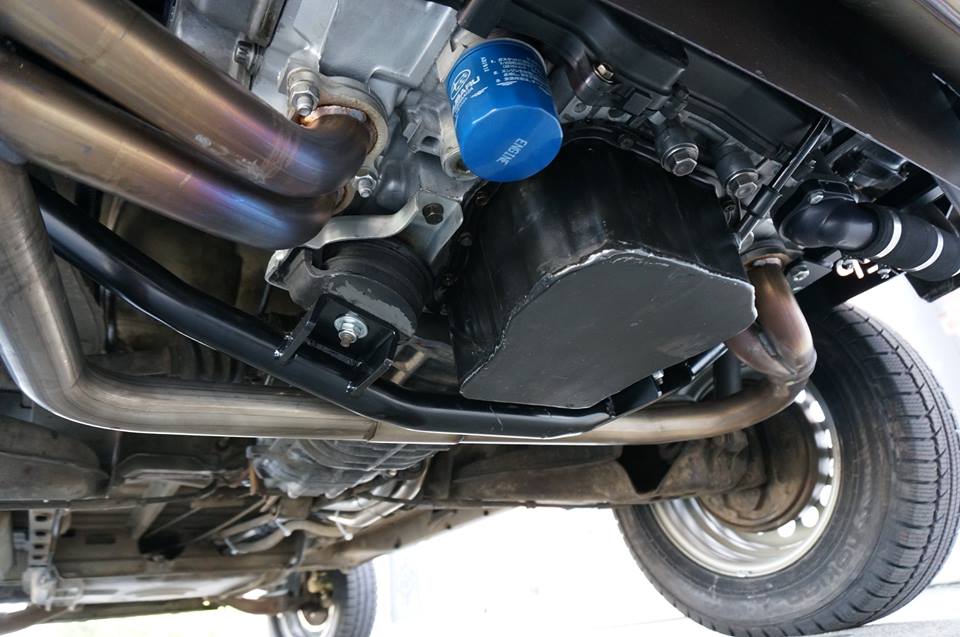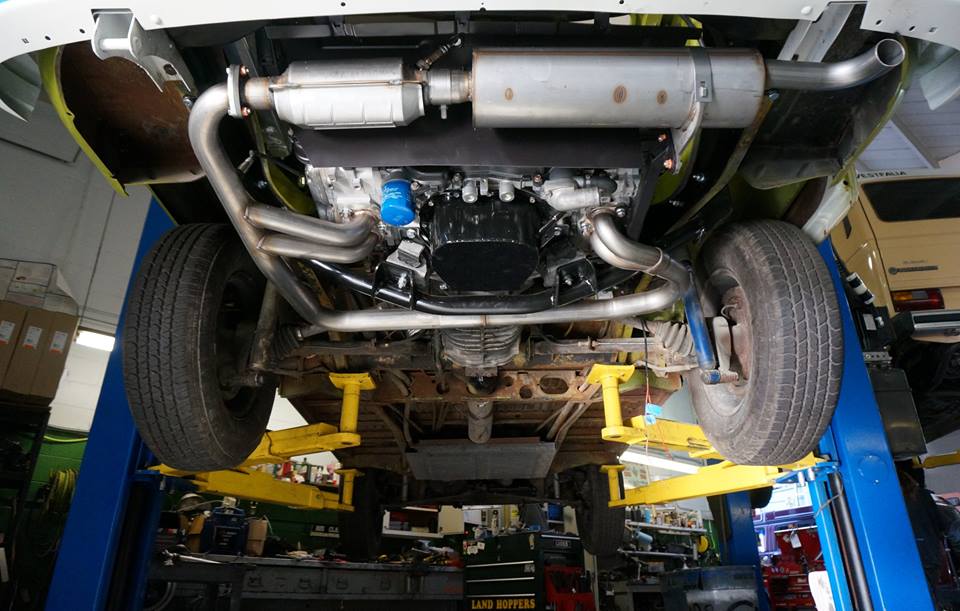|
The California Legal Subaru Conversion!
More ReliabilityRely on Japanese engineering. Plus, it's easier to find parts and service More PowerRev up with 50% more power and 15% more torque More SavingsEnjoy increased fuel economy, 87 octane (cheaper) gas, and less maintenance Create the Dream Vanagon You've Always Wanted
When it comes to replacing Vanagon engines, we’ve seen almost every conversion out there. Based on our experience, the Subaru engine conversion is the clear choice we recommend. Nothing else even comes close.
The Subaru engine conversion offers clear advantages for your Vanagon:The Subaru engine has 130 horsepower and 135 ft/lbs of torque compared to the Vanagon's 89 to 94 horsepower and 117 ft/lbs. That’s about a 50% increase! This increased power comes in an engine that's more compact, so your engine compartment is less cluttered than it was originally. Also, unlike some other Vanagon engine conversions, we don't raise the engine lid or alter your bed, and there's no loss of ground clearance on the 2wd. (There will be a 1" loss in a 4wd with the modified skid plate installed.) You get increased power with the Subaru conversion while also saving money every time you drive your VW van by being able to use 87 octane gas. Tune-ups also save money, because the new Subaru engine only requires replacing the spark plugs and spark plug wires, and the computer self-adjusts the rest. The original VW engine has many more parts, and a tune-up requires adjusting timing and mixture by hand. Subaru engine diagnostics are mostly done by the computer with the fuel injection system's on-board diagnostics (OBD1). If there’s trouble with the Subaru engine, it shows you the code—no need to pay someone to scan it! This way even technicians unfamiliar with Volkswagen Vanagons can repair it (and repairs will be needed much less frequently).
A Frankensteined Vanagon? Not on our watch...The conversion is 100% California legal (as well as legal in every other state). The new Subaru engine is completely self-contained and looks like it would in a Subaru—it’s not a “Frankenstein” in any way. Any person who’s worked on a Subaru engine will be able to dive right in—which means that you can take it to any mechanic, without searching for the few of us who are competent with the waterboxer engine and fuel injection. The new engine offers huge savings as well as increased convenience, as you won’t have to do a $2,900 cylinder head reseal every 80-100k miles as you would with the stock VW engine. (Plus the engine has better gas mileage and can use 87 octane gas!)
Make your Vanagon better than new:Having a Subaru conversion eliminates the problems your Vanagon never should have had in the first place. It simplifies the cooling system by replacing the many large and small cooling hoses in your engine compartment with 2 metal pipes and 3 thick, new, easily visible hoses. Fewer hoses means fewer potential problems. You also get a redone wiring harness which is bench-tested to make sure you have perfect wiring—you're not reusing your old harness like you would on a rebuilt Vanagon engine. And unlike with a rebuilt VW engine, the Subaru conversion comes with a new stainless steel exhaust, including catalytic converter, and a new clutch. The Subaru engine is engineered to last more than 300,000 miles (almost 100,000 more miles than the VW rebuild, high-powered or not). This is due to excellent design by Subaru. It starts with a factory-designed counterbalanced crankshaft, 4 valves per cylinder (not 2 like the VW engine, even the high performance ones), and 1 overhead cam on each head to open them. In addition, the Subaru has a fuel injection system that is miles ahead of what Vanagons use. All of this makes the Subaru conversion the smoothest, most balanced, lowest maintenance conversion possible for your Vanagon.
What does the Vanagon Subaru conversion cost?
Prices for the California legal 2.2 conversions start at $22,000. Which vehicles will you do a conversion on?Currently we do the Subaru conversion on the water-cooled Vanagon only. This includes the 83 1/2 - 92 gas as well as the 1982 diesel models.
How do you do the VW Subaru conversion?We start with a professionally rebuilt engine with many Subaru factory parts: only the best of the best for our beloved VW Vanagons! After that we install new outer seals, pulleys, belts, a shortened oil pan, clutch (for manual), cooling system, hoses, and exhaust. The old engine and wiring are removed from the Vanagon and the conversion wiring harness is installed, followed by the conversion installation and hook up.
Once running, your Vanagon’s new Subaru engine is checked for codes, leaks, and emissions, adjusted if needed, and then it's off for its first drive. After the initial test drive we check for codes, leaks, temperature, and running condition. Once we give your Vanagon a clean bill of health, we take two more (much longer) test drives. We repeat the process until we feel great handing you the keys to your new Subaru-powered Vanagon.
We’ve done 219 Subaru VW conversions so far!
Do you sell VW Subaru conversion kits?Currently we don't sell a complete conversion kit for home use, but we are always doing them in-house. For more questions or information about scheduling a conversion please give us a call. Maintenance after your Vanagon Subaru conversion:
Which oil do I use?5w30 non-synthetic
Which coolant do I use?
Subaru Long-Life coolant; Prestone or equivalent if not available.
When do I have a tune-up done?
Every 30,000 miles.
How about oil changes?
Every 3,000 miles.
How do I break in my Subaru engine correctly?After hundreds of VW Subaru conversions, we have clear recommendations for how to take care of your new engine.
Take it easy for the first 1,000 miles. Avoid hard starts and stops. Avoid revving the engine above 3500 RPM and vary your RPM by doing city and highway driving. Don't use cruise control much, if at all. After 1,000 miles, your VW van needs to come back here for an oil change and inspection (included in the conversion price).
|


